Flower Structure and Morphology
General Structure of the Flower
| In this section we will examine the general structure of the flower. The flower is the main distinguishing characteristic of the flowering plants (angiosperms). We will look at the generalized flower to become familiar with flower parts. Although flowers come in various shapes, sizes and colours, they are all based on the same plan. The variation we observe reflects the many ways by which reproduction is accomplished |
 Lily flowers |
A flower is a specialized reproductive shoot consisting of an axis bearing a maximum of four sets of ‘appendages’: sepals, petals, stamens, and carpels. These appendages are actually modified leaves (the flower is a modified branch). If all four sets of appendages are present, the two outer sets are sterile. A cartoon of a longitudinal section through a flower illustrates the different sets of appendages. The outermost ones are the sepals. These are often greenish, and leaflike. In the bud they cover and protect the other flower parts. The sepals are collectively known as the calyx. Inside the calyx are the petals, which are usually more brightly colored and less leaflike than the sepals. Collectively they are known as the corolla. The calyx and corolla together are called the perianth.
| The next whorl, the stamens, produce pollen. The innermost part of the flower is where you find the female reproductive structures. This is often made up of one pistil, a structure which may be made up of one or more carpels (modified leaves). A pistil has a swollen base called an overy, which contains the ovules (later to become seeds). The tip of the pistil is often enlarged and lobed. This is the stigma which is the receptive surface. Here pollen lands. A style is the part of the pistil which connects the ovary with the ovary. |
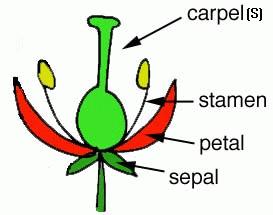 Longitudinal section through a flower. |
| In a cross-section through the flower bud of a lily flower, you can see the different whorls of flower parts. Lilies are monocots. Monocots have flower parts in whorls of threes (or multiples of threes). All the whorls here are in threes, except for the stamen which you can see there are six of (a multiple of three). |
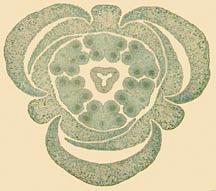 Cross-section through the bud of a lily flower. |
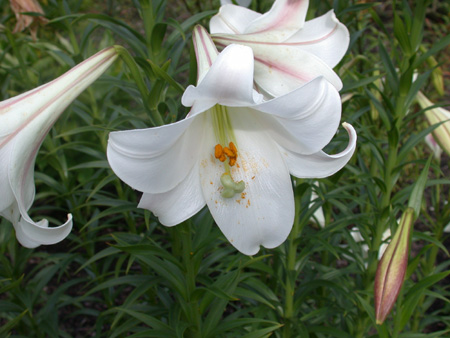
Lily Flowers
| The two innermost sets of appendages are concerned directly with reproduction. In lily, as shown in the figures above and below, the sepals and petals look almost identical and are thus called tepals. To the inside of the perianth are the stamens. The stamen is made up of an anther (Anth) and a filament (Fil). In the middle are the carpels. In this case they are fused to form a structure with and ovary (Ov), style (Style) and stigma (Stig). |
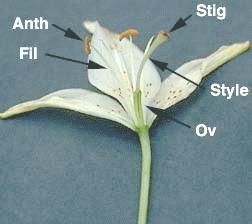 Longitudinal Section Through a Lily Flower |
| The glistening surface you see in the picture below is the three-lobed stigma. It is the receptive part of the plant. If compatible pollen lands here it germinates, producing a pollen tube which penetrates the pistil and grows down toward the ovules. An egg is found within each ovule. |
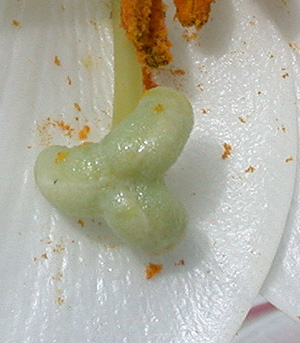 Stigma of the Pistil of a Lily |
| The image to the right is a cross-section showing numerous ovules present within an ovary. To develop into a seed each of the ovules must be fertilized by a different pollen grain. |
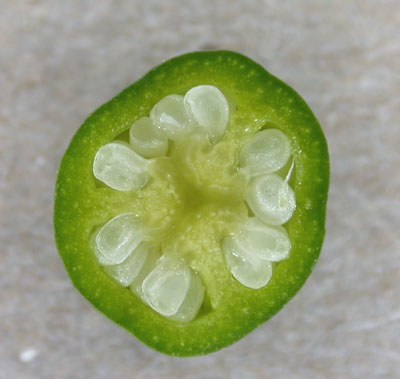 Cross-Section Through an Ovary |
| A stamen is made up of two parts: anther and filament. The anther produces pollen. The stalk to which the anther is attached is called the filament. |
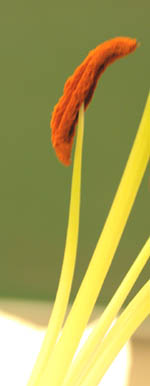 Stamen of a Lily |
| Forsythia has its petals and sepals in fours. The sepals are small and green whereas the petals are large and yellow. Why is this plant not a monocot? |
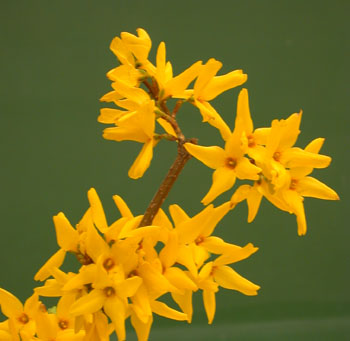 Forsythia Flowers |
| In the preparation of flower in the image below you can see that the sepals are leaf-like. |
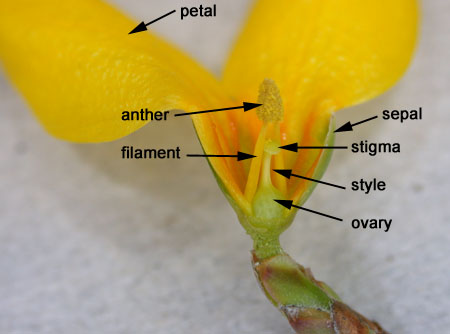 Longitudinal Section of a Forsythia Flower |
| Flowers come in many shapes, sizes and colours. Their morphology is important because they must be attractive to the vectors that pollinate them. In this section we will examine only a few aspects of flower morphology. Keep in mind that there is much more “out there”. |
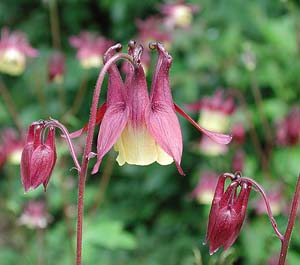 Columbine Flowers |











